The Telefunken AR70 Pg 2
Review by Fox Audio Research
The Preamp continued...
So we lifted the boards and found a little Resistor/capacitor network tacked onto the bottom of the board, across the output of the preamps. That explained the funny bass response, so we removed them immediately.
So what did the response look like with the R/C network removed? Well it got much closer to normal as you can see below. In fact thats a pretty good reponse for a tube amp.
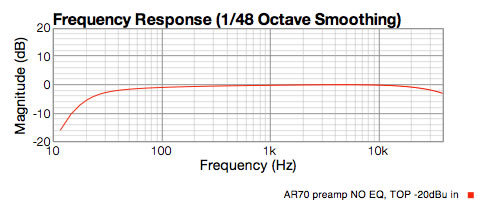
We also noticed that the output transformers seemed a little smaller than what we are used to, but they said T14/1 on them and they are 40% thicker and about the same weight as the AMI T14 shown below. So they had the same amount of core material.

But the Bass end seemed to be less than what I see in my c12 and m251 style tube mics and the high end was down a full dB at 30kHz. I took out one my c12+ mics which use the AMI T14 and a 6072 tube for quick comparison. I was right. It was good but it wasn't the same as the AMI T14.
Now the circuit in the AR70 is dead simple. Like the u47 there is no input cap. The capsule connects directly the tube grid. So after the tube there are only two things that could limit the low end response. The output cap and the transformer. Since the output cap was 2 uF electrolytic, it left only the transformer. So here is what happened when we replaced the T-Funk T14s with Tab-Funkenwerk T14 replicas. And because we have found a new smaller size polypropylene series of caps, we replaced the output cap with a 2uF film cap, which extended the high frequency response as well. Bonus!
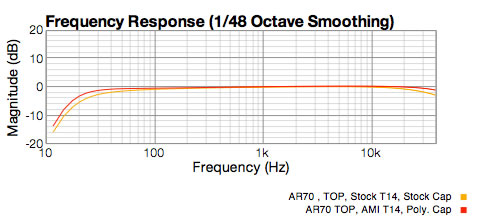
That looks more like what we like to see!. That's a better response for a tube mic preamp in our opinion. Believe it or not you can hear that bottom end extension like night and day. So now the preamps were working as expected. But some might argue that less bottom creates some bass clarity so it's not a black and white choice.
Output Capacitor Makes a Difference too
After we changed the transformers we also replaced the electrolytic output caps. If anyone still believes that electrolytic caps sound the same as film caps take a look at the graph below. The polypropylene cap clearly reduces distortion across the entire audio spectrum. Both caps were 2uF by the way.

Improved Separation
One of the things that people don't think about much in the digital world is crosstalk. That is when one channel's sound "bleeds" into another channel. In stereo this reduces the "separation" between channels and reduces the maximum stereo image. Not a good thing. In 1959 when stereo separation on vinyl was on the order of 25 dB, it didn't matter much. Not so in the digital audio age!
Crosstalk can happen in many ways, but in amplifiers it can happen when they share the same power supply. The AKG c24 did not have power supply decoupling circuits because there was no way to fit them in the mic with 1959 sized components.
Small parts today can found that fit easily. With a little cut to a trace on each board and the addition of a resistor and a capacitor we added power supply decoupler circuits to AR70 circuit. This improved the cross talk between the channels from 28dB to 38dB. Not perfect, but better.
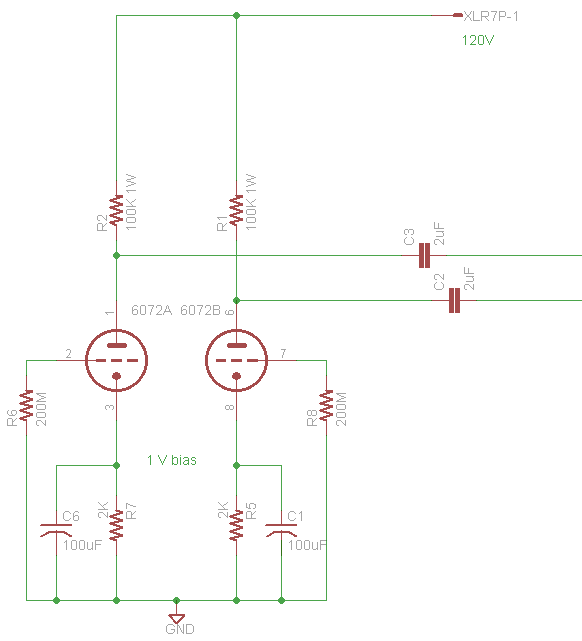
Partial AR70 circuit (stock) shows no power supply decoupling. This was the same in the c24 stereo microphone. Crosstalk can occur from channel to channel through 100K plate resistors.
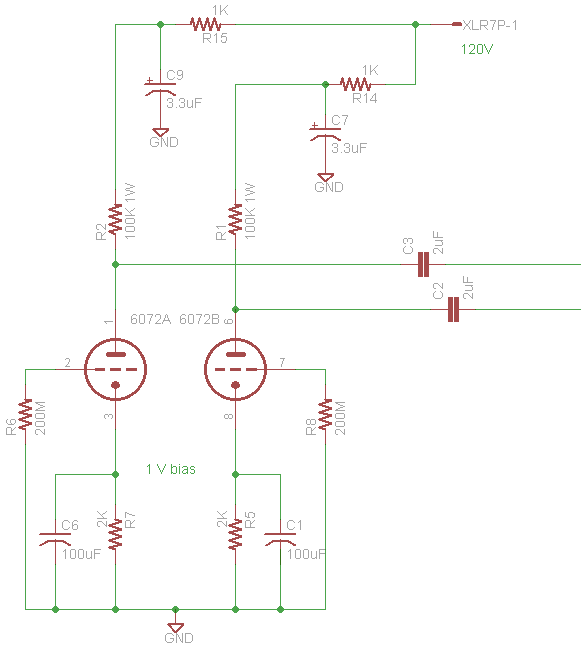
Partial F AR70 circuit with power supply decoupler networks. Sound now cannot travel on the power supply line and enter the opposite channel due to the 3.3 uf Caps and 1K resistors.
Overall Preamp Improvement
The list of preamp improvements:
- Removal of un-usual EQ network
- New Tab Funkenwerk T14 replica output transformer
- New Polypropylene output capacitor
- Increased plate current with changed biased resistor
- Addition of power supply decoupling network
If we compare the stock AR 70 preamp to the FAR 70 preamp we can see there was a real improvement in performance that comes from each small change creating a large total improvement. Response is flat and distortion products are tens of decibels lower.
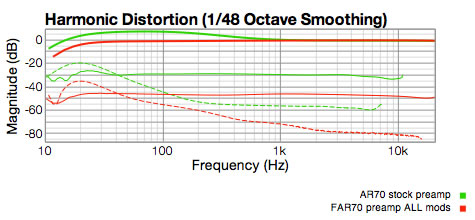
Or shown another way
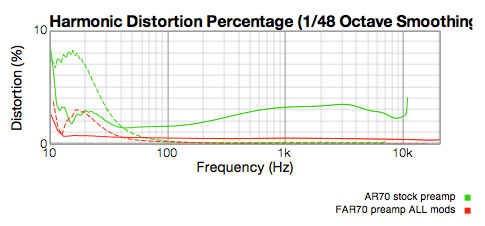
What About the Capsules?
The capsules in this AR70 were the original TK67D capsules that look to me like every other 32mm Capsule used in mics that come from Asia.
Below is the response of both capsules measured simultaneously. No surprises there. K67 high end lift and weak low end, starting to drop at 60Hz.

Telefunken is now advertising their new TK51D capsule which looks to our eyes very much like the capsules we use in our c12+ and m251 Standard Edition mics. If they are then you can expect the news mics to sound much better than TK67D capsules did. Should be extended bottom end and a more "c12" character high end. Bright but not harsh.
And here is one of the CT12 capsules sitting in the rotating upper position on the F AR 70. We added extra Teflon spaghetti tubing to the long leads on the upper capsule. This helped preserve the high end response on these extremely Hi-impedance wires.
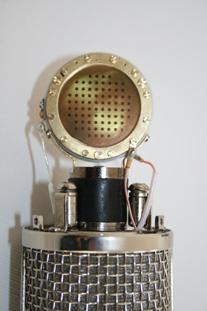
What did the owner think?
The one quote that stands out from an email was," I can hear my drums an octave lower now."
So the AR70 can be improved significanty. If the CT12 capsules from Denmark don't match your budget, we can replace the capsules in your AR 51 or AR70 with our 12 capsules that look just like the TK51D from what we can see. But where T-Funk will only change your capsules we can make the improvements in the preamps as well that really turn these products from very good mics to really great mics.
How did it Sound?
Well just listen to this audio Sample of the F AR-70 Stereo microphone and you can decide for yourself.
I like it!
If you have any comments for us on this review send them to :
